Moe: Now he’s ragging on air conditioners!
Carl: Hey, they keep us cool in the summer, pal!
When we bought the house, it had one window air conditioner of limited cooling power. A former owner removed one of the original piano windows for this purpose. Did he bother to save the window for later use? Nope.
Over the years, we replaced that unit and added others. It doesn’t get very hot here for much of the summer, but when it does, it is (in my opinion) UNBEARABLY hot. In recent years, I seem to be turning into a Sebacean, at least from a hate-to-be-overheated perspective.
Since we were remodeling anyway, we decided to get some pricing on AC installs. We received two bids in the brand-new-nice-car range and one that seemed–at least in comparison–semi-achievable. Nice-used-car. It’s expensive, no two ways about it, but shopping around made a big difference.
Each company quoted ductless mini-splits. These are the units that you hang on the wall that attach directly to an exterior AC unit.
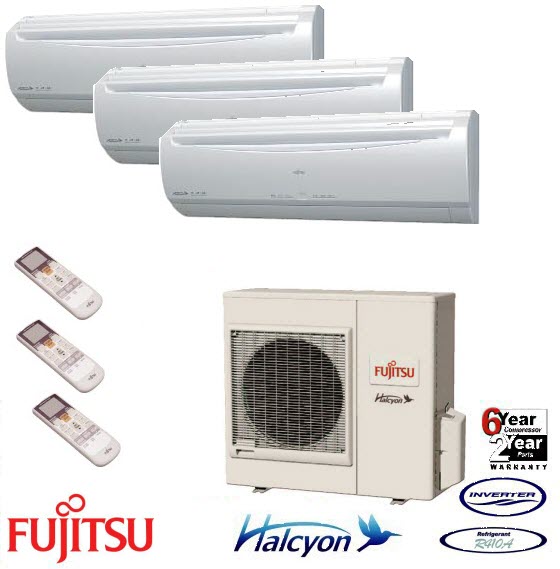
A mini-split/ductless system by Fujitsu. The units are mounted to exterior walls, then a pipe runs outside the house to the fan/cooling unit thing. The system typically needs an exterior run to each individual unit, but that allows for zone cooling (via remote, apparently).
The first two bidders also quoted mini-duct systems, also called small-duct or high-velocity AC.
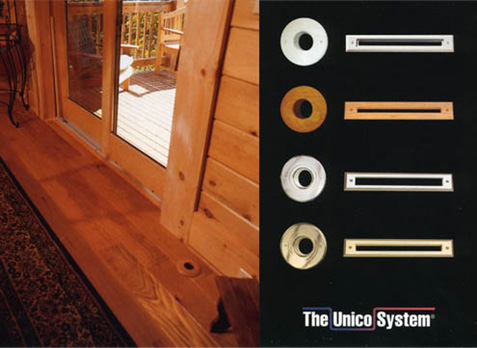
Unico mini-ducts. The ducts are skinny and flexible, so they can be snaked through walls for fewer or no soffits. The cooled air is forced through at speed and exits through these classy vents.
And two of the bids included “regular” central air conditioning.
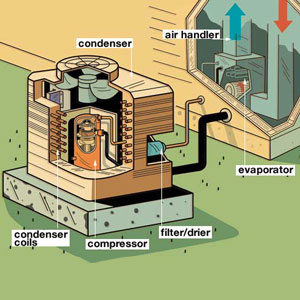
From This Old House
We had talked about this kind of conventional AC with a few HVAC people over the years. Generally, they would conclude with, “But you have radiator heat.” In other words, we didn’t already have the larger ducts in place that a forced air furnace system uses. People with forced air heat can add AC reasonably easily. If your house has radiators, though, the ductwork needs to be retrofitted. Unlike mini-duct systems, though, regular AC ducts are pretty large (flexible ducts about 6 inches in diameter and metal ducting about 8 x 10 inches). It’s a fair bit to retrofit. That rhymed.
Based on our research and the information from potential installers (who got sick of our questions), here is our non-definitive take on the pros and cons of each of these three options.
1. Mini-Splits (a/k/a Ductless AC)
Pros:
- Zoning only cools where you want.
- Lack of ducting reduces energy lost from air leaks.
- Sticking to a small number of individual wall units makes it fairly affordable.
- No major remodeling required.
Cons:
- Several articles (and two of three installers) say the units are not as efficient as hyped.
- May be difficult to locate the wall units to cool effectively, and multiple condensers might be required outside.
- After a couple of wall units, the price goes up rapidly. One of our quotes for a mini-split was more than for a mini-duct system by another installer.
- Multiple exterior units and lines may be unsightly.
2. Mini-Ducts (a/k/a High Velocity AC) (The many minis confused me too, by the way.)
Pros:
- No major remodel (unless there’s a problem snaking a duct somewhere, in which case, they might open up a wall — but no chases/soffits).
- Historically sympathetic to architectural features.
- Efficient.
Cons:
- Some dislike the “high velocity” aspect or find them noisy.
- Blimey, is it EXPENSIVE! One quote was above $26,000.
3. Central Air
Pros:
- Less expensive than most options (only a very limited mini-split installation was cheaper in our quotes).
- Serves entire house.
- Lower ongoing maintenance costs (according to all three installers).
Cons:
- Ductwork must be accommodated inside the house, maybe requiring chases and soffits (or loss of closet space).
- Less efficient than mini-split systems.
- System requires large air returns to circulate displaced air back into the system.
Just because we are aware of these three major options, though, does not mean that (a) there aren’t other options, or (b) that you will be able to tell which option is which on any given bid. On this latter point, HVAC people aren’t trying to be misleading — it’s just that their quotes can be technical or inaccessibly worded.
Case in point: the company we went with (Metro Heating in St. Paul — not sponsored, they don’t know we blog) included an option for a system involving ductwork in the walls. They said we should be able to get the ductwork inside walls easily and that the vents would be pretty small. We took this to mean they were talking about a mini-duct system. When we talked in more detail, it was actually a standard central air system, but with smaller vents than we anticipated, and they had a plan for tucking in the larger ductwork.
Central air ticked the following boxes for us:
- Minimal piping on the outside of the house.
- Comparatively affordable pricing (both initially and for maintenance).
- Relatively low-profile vents.
- No more window units!!!
Installation was just completed this week, so I’ll tell you all about it in the next AC post (now available here).


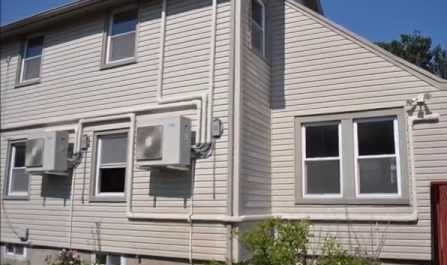

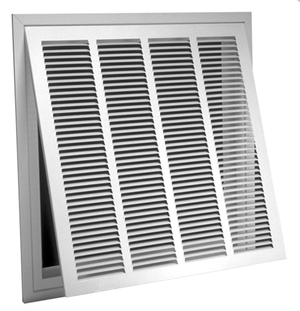


2 Responses to Retrofitting Air Conditioning to an Older Home